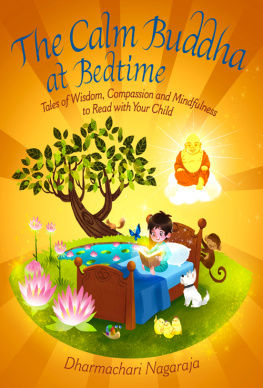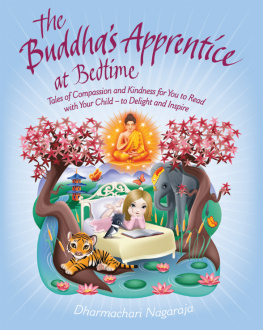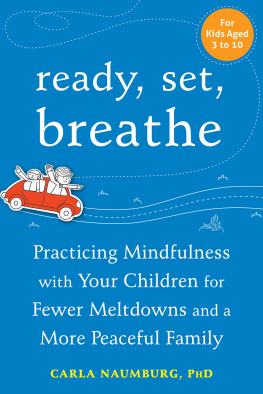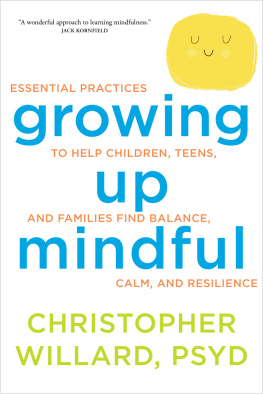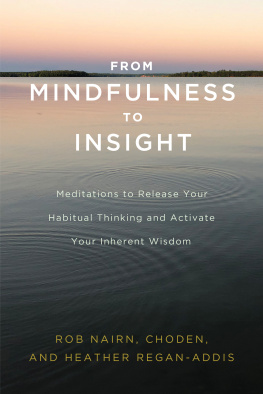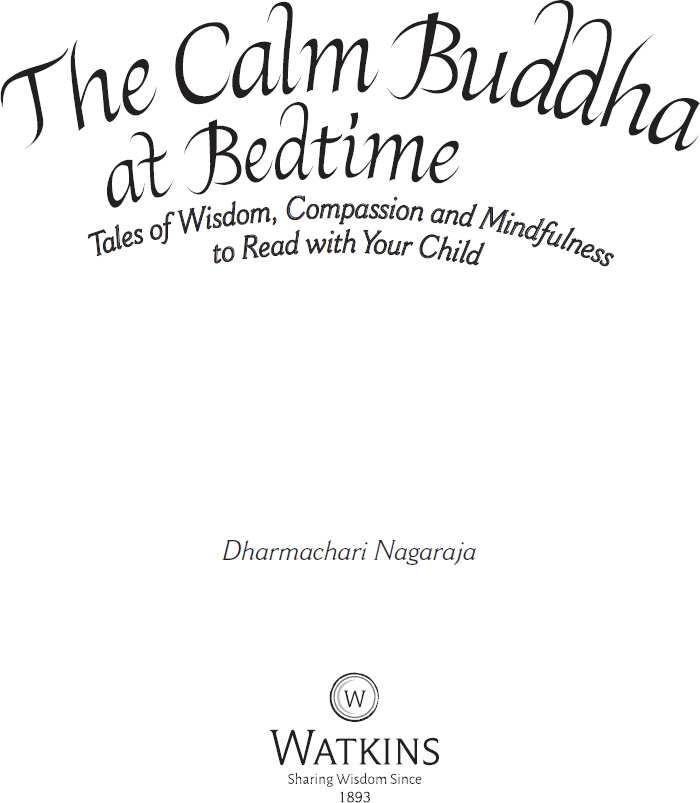Contents
About this Book
T his is the third in the Buddha at Bedtime series of books, in which I retell traditional Buddhist stories with the aim of restoring compassion and mindfulness to childrens often overstimulated and sometimes stressful lives. I hope that reading these stories before bedtime will help children let go of their anxieties and concerns at the end of each busy day and feel more ready for a deep, restorative sleep. Above all, through the stories I want to nurture an understanding that, despite being so young, children do in fact already have the tools, skills and inner space to deal the many distractions, challenges and pressures that life might put in their path.
Through a wide range of settings, characters and predicaments, each story explores an aspect of the four primary Buddhist principles or values, known as the Four Noble Truths (see page ), which the Buddha taught was fundamental to a contented life. At the end of every tale, a key lesson of the story is highlighted by Hotei, the Laughing Buddha (see opposite). I hope Hoteis words of wisdom, as well as the challenges and solutions encountered throughout each story, will encourage conversation between you and your child on all manner of topics. This way, you can explore your childs developing views about themselves and the world, and help them to process any difficulties they might be going through.
Choosing a story
You dont need to read the book from start to finish. Each night, encourage your child to choose a story based on the title that appeals most, or the picture or character they are drawn to. Alternatively, you could choose for them, based on key themes that you feel might help your child most at that particular time (the contents page gives a useful summary of these and theres an index of themes at the end of the book to help you, too). For example, if you are worried that your child is finding it difficult to be accepted into a new school or some other new situation, you might read Tintoretto, the Mouse from Town; or if you think your child is feeling sad about the loss of something or someone
Archie and Hotei
Two special characters will join you as you explore the pages of this book. The first is my wee dog Archie, who is hiding in each illustration, searching for the jewel of wisdom in each story, just as I hope you and your little listener will do, too. See if you can spot him! His patience, persistence and gleeful curiosity sum up a good approach to the Buddhas teachings. The second character is a little, rounded, happy chap called Hotei. Often referred to as the Laughing Buddha, he is not the Buddha himself, but the embodiment of an ancient Chinese Buddhist monk known for his generous nature and broad smile. You will see Hotei at the end of each story, where he offers some words of guidance and wisdom that encapsulate the storys central value. (perhaps youve moved house, theyve changed schools or theyve suffered a bereavement), you might read The Teddy Bear Tussle, with its theme of being brave and letting go.
Opening up to meditation
All the stories start by encouraging your child to relax and get ready to listen. This way of entering the world of storytelling helps to promote a less distracted, calmer, more receptive and more meditative state of mind (see pages for more insight into the art of mindfulness). It also helps your child to navigate their way more easily over the horizon into sleep once the story is over.
At the end of the book youll find three guided visualizations, as well as general suggestions for approaching meditation, which will allow you to gently introduce your child to a more structured meditation practice. A key aim is to increase awareness of how emotions reveal themselves in our physical body. These meditations will help to calm and centre your child and teach them to read their own body for signs of stress or anxiety, and react appropriately.
I hope that sharing this book with your child brings both of you enjoyment and contentment, as well as a little nourishing food for thought. As the well known Buddhist blessing goes:
May you be well, may you be happy, may you be free from suffering.
Who is the Buddha?
B orn more than 2,500 years ago in what is now Nepal, the Buddha at that time simply known as Siddhartha Gautama wanted for nothing, living a life of luxury behind the walls of his familys many royal palaces. One day, he ventured out in search of new experiences and adventure, and was deeply shocked and disturbed by what he saw. On the dusty lanes of the city, people were suffering, enduring the pain of old age, sickness and death. These sights made him very unhappy and he retreated once again behind the palace walls.
However, his material wealth had lost its appeal, so eventually Siddhartha Gautama went out into the city again.
This time he met a monk who was calm, happy and at peace.
Young Siddhartha could not understand how the monk could be happy in a world that held so much misery, but, inspired, he decided he would leave his royal life to find true happiness. He travelled far and wide across India, training under many teachers and living a life of poverty and severe self-discipline that included periods of strict fasting. He also learned to meditate: to bring his mind into quiet focus in order to reflect, contemplate and find inner peace. Siddhartha persevered with his life of self-denial for six years but did not find the happiness he sought.
At a place called Bodhgaya, in northeastern India, Siddhartha sat down in the shelter of a bodhi tree. With steely determination, he vowed not to get up until he had discovered the secret of lasting happiness. He meditated deeper and deeper all through the night, until the meaning of life became clear to him and he experienced what we know of as his Enlightenment. Thereafter, he was known as the Buddha, meaning the Awakened One.
After his Enlightenment, the Buddha was determined to share his understanding of the truth of life with as many people as would listen. He gave his first sermon to a group of monks who were angry that he had given up his life of denial, telling them about the Four Noble Truths (see page ) that would lead to Enlightenment and true, lasting happiness. He travelled far and wide, using stories like the ones in this book to teach about the importance of living with compassion, generosity and wisdom. And he called his approach the Middle Way, indicating that these were a realistic set of values lying somewhere between austerity and indulgence. He encouraged his followers not simply to adopt his teachings, but to test them and experience them for themselves. In the same way, one of the most important lessons we can teach our children is that they have to find out for themselves what really makes them happy. We can guide, advise and comfort them, but in the end only they know their own true mind.
At the age of 80 years old, at Kushinagar in northern India, the Buddha lay down and died. His last words were, Impermanence is inherent in all things. Work out your own freedom with diligence. Its said that as he died, the earth shook, blossoms fell from the sky as stars shot from the heavens, and the air was filled with celestial music.
What are the Buddhas Teachings?
T he teachings of the Buddha, known as Buddhism, promote fundamental positive principles and practices that transcend time and culture. Today, approximately 350 million people worldwide follow the way of the Buddha. As well as providing guidance on ethical and moral behaviour, Buddhism offers practical strategies for how to cope with the anxieties and struggles of daily life, skills that can help both our children and us to flourish no matter what life throws at us.

